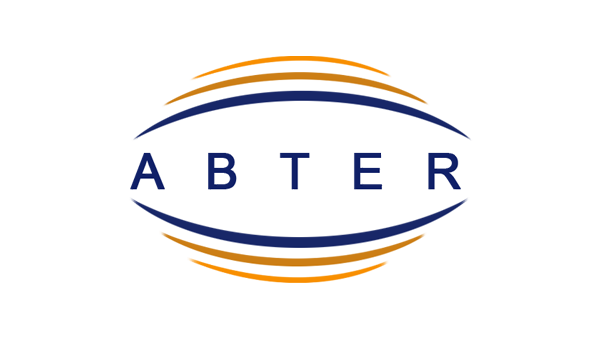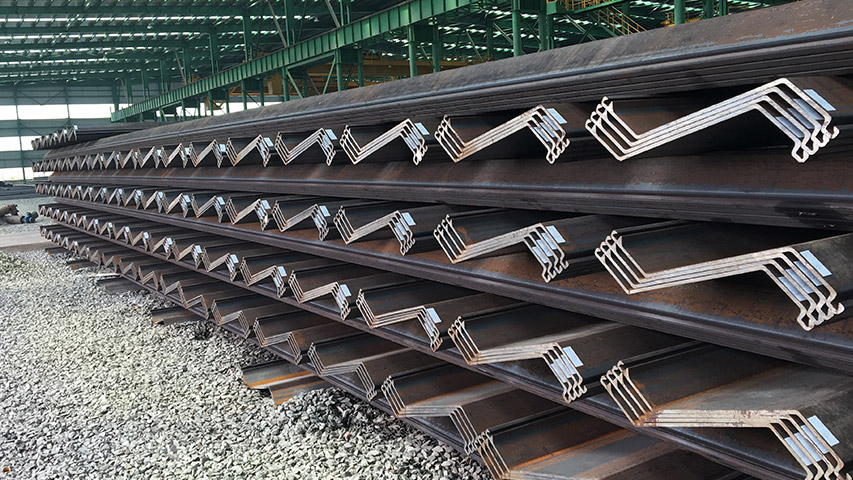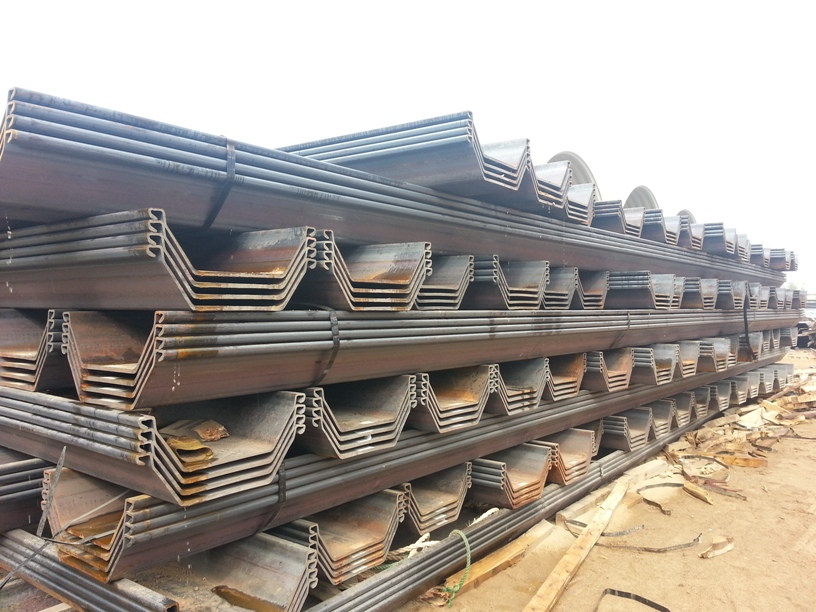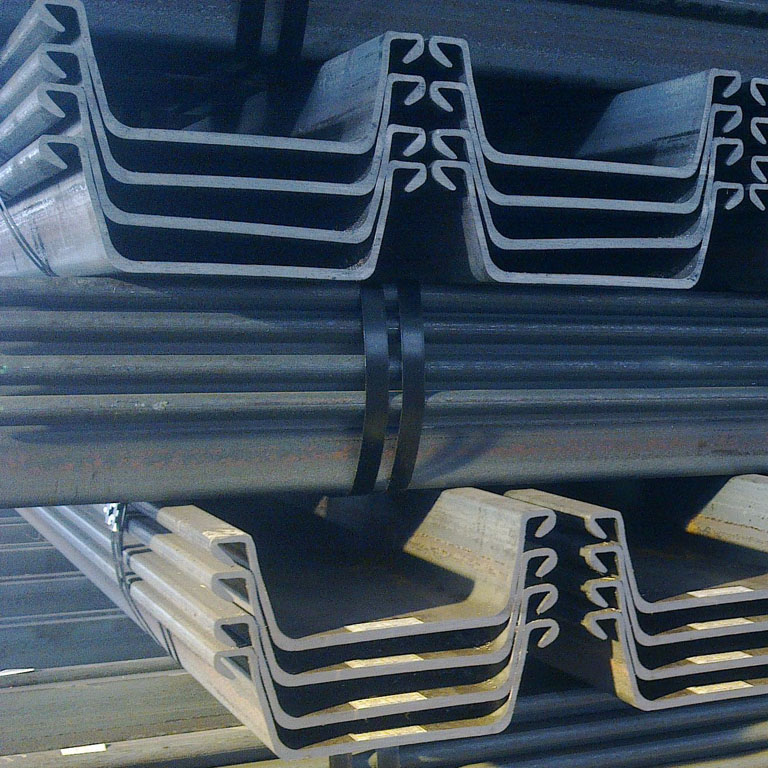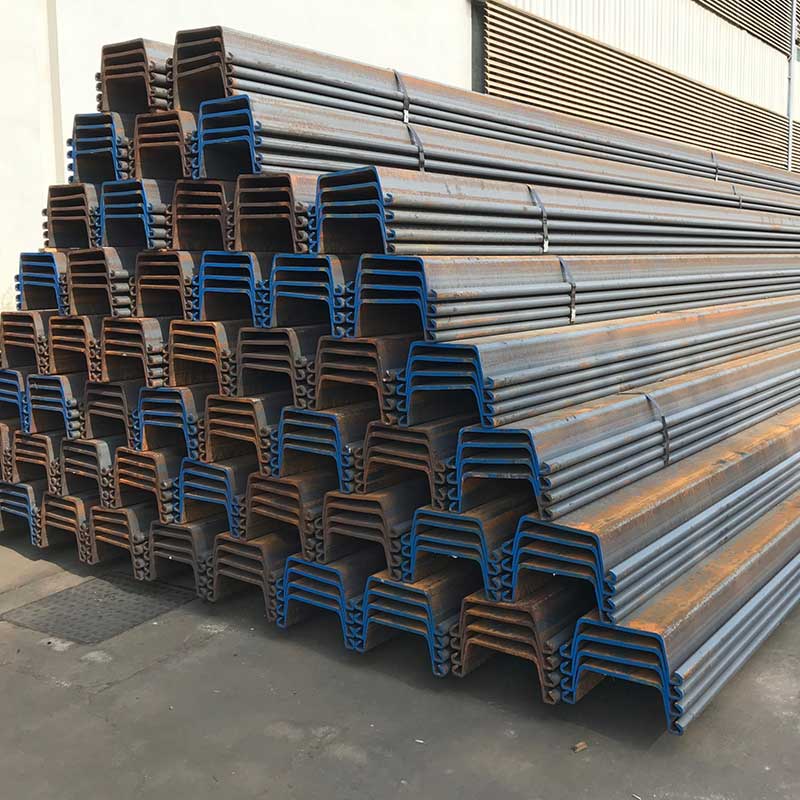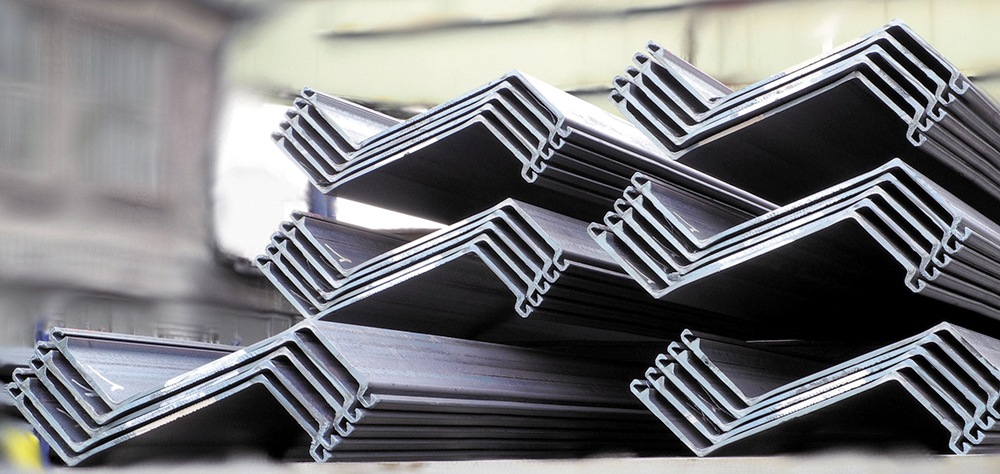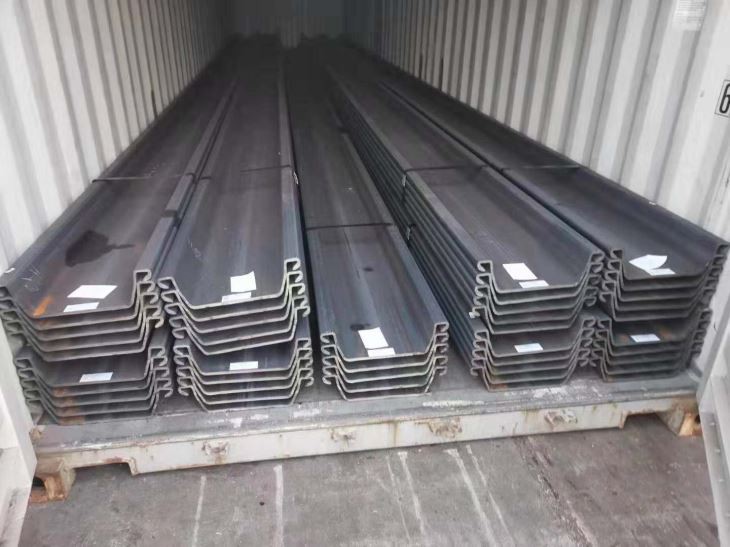Tablestacas de acero vienen en una variedad de formas., tamaños, y medidores.
Se clasifican ampliamente en los siguientes tipos.:
- Tablestacas de acero tipo Z: Estos son el tipo más común de Tablestacas en América del Norte y se pueden utilizar en una amplia variedad de aplicaciones.. Los perfiles en Z se fabrican con uno de tres métodos: Líneas AZ de ArcelorMittal, producido por la línea Mannesmann, estan enrollados; SC de Skyline Steel, SK, y las series SM están conformadas en frío y las series NS-SP de Tadotsu y Nippon Steel, JFE/JFESP tienen un módulo intermedio.
- Tablestacas de acero tipo U: Las tablestacas en U retienen el suelo y el agua al igual que las pilotes en Z, con una diferencia importante: Los pilotes en U tienen el enclavamiento en el eje neutro.. La colocación de la cerradura en la línea central de la pared reduce la eficiencia de la sección y puede causar problemas con la instalación., especialmente cuando se requieren profundidades de conducción profundas.
- Tablestacas rectas: Tablestacas de alma recta están diseñadas para formar ataguías y se utilizan junto con tablestacas de tipo Z y U.. Estos pilotes no están diseñados para resistir momentos de flexión, pero se utilizan en aplicaciones donde se requieren muros de contención empotrados..
- Tipo de sartén / Tablestacas trapezoidales: También se les conoce como pilas de cajas., y se utilizan en estructuras de retención más grandes.. Por lo general, se forman soldando o bloqueando Tablestacas individuales para formar una caja o una forma trapezoidal..
- Tablestacas tipo Omega: Estos pilotes son similares a los pilotes tipo Z pero tienen una forma diferente, como la letra griega Omega. (Oh). Tablestacas omega se utilizan a menudo en Europa.
- Tablestacas de Frodingham: Estas son Tablestacas de tipo Z que fueron fabricadas originalmente en el Reino Unido por Frodingham Iron Company., de ahí el nombre. Ahora los fabrican varias empresas de todo el mundo..
- Tablestacas de acero conformadas en frío: Este tipo de pilote se forma mediante laminación a temperatura ambiente.. Si bien son menos costosos que los pilotes laminados en caliente, También tienen menos capacidad de carga..
- Tablestacas laminadas en caliente: Estos se forman calentando acero a altas temperaturas.. Los pilotes laminados en caliente tienen una mayor capacidad de carga pero también son más caros..
cada tipo de pilote de chapa de acero está diseñado para aplicaciones específicas, y la elección depende de los requisitos del proyecto., incluyendo la carga de diseño, condiciones del terreno, y método de instalación.
¿Cuáles son las ventajas de utilizar Tablestacas de acero tipo Z en comparación con otros tipos??
Tablestacas tipo Z aportan varias ventajas debido a su forma particular y diseño entrelazado. Aquí hay algunas ventajas notables.:
- Alta resistencia: Tablestacas tipo Z generalmente están hechas de acero de alta resistencia., lo que les confiere una excelente rigidez estructural. Su forma proporciona un módulo de sección alto., lo que significa que pueden transportar cargas más altas en comparación con otros tipos.
- Diseño eficiente: Los enclavamientos en Tablestacas tipo Z están ubicados en las fibras más externas del muro., lejos del eje neutro. Esta ubicación da como resultado un módulo de sección eficiente y proporciona una alta resistencia al momento de flexión..
- Eficiencia de conducción: Tablestacas tipo Z suelen tener un ancho grande, lo que ayuda a reducir el número de enclavamientos y, por lo tanto, disminuye la posibilidad de fugas.. El mayor ancho también significa que se necesitan menos pilotes para la pared., ahorrando tiempo de instalación.
- Versatilidad: Tablestacas tipo Z se pueden utilizar tanto para aplicaciones temporales como permanentes., y funcionan bien tanto en aplicaciones rectas como curvas..
- Buen diseño de enclavamiento: El diseño de interbloqueo en Tablestacas tipo Z suele ser más robusto y puede soportar cargas de tracción más altas.. Este diseño los hace adecuados para muros de alta carga y aplicaciones de alta presión de agua..
- Durabilidad: Como otros Tablestacas de Acero, Los pilotes tipo Z son muy duraderos y pueden soportar condiciones ambientales adversas.. Se pueden recubrir o tratar para mayor resistencia a la corrosión..
- Reutilizabilidad: Tablestacas tipo Z se pueden extraer y reutilizar en otros proyectos, convirtiéndolos en una opción sostenible.
Es importante tener en cuenta que, si bien las Tablestacas tipo Z tienen muchas ventajas, La elección del tipo Tablestaca siempre debe basarse en los requisitos específicos del proyecto., incluyendo las condiciones del suelo, nivel del agua subterránea, requisitos de carga, y consideraciones de costos.
